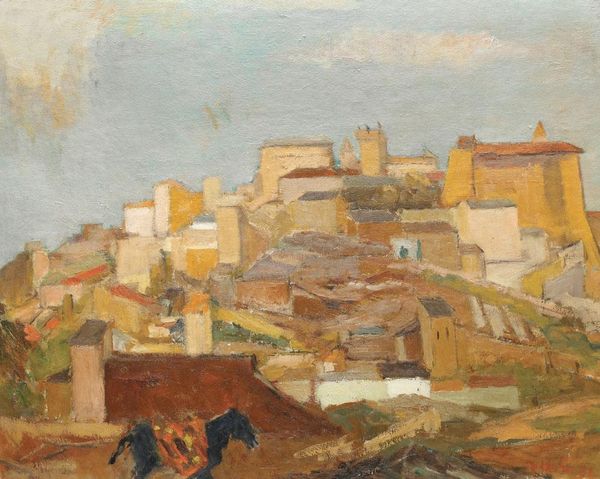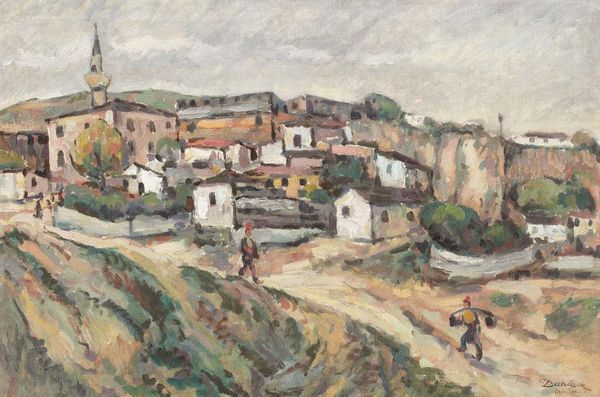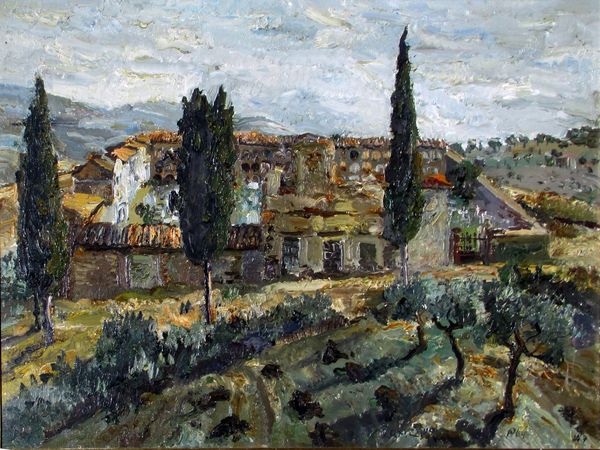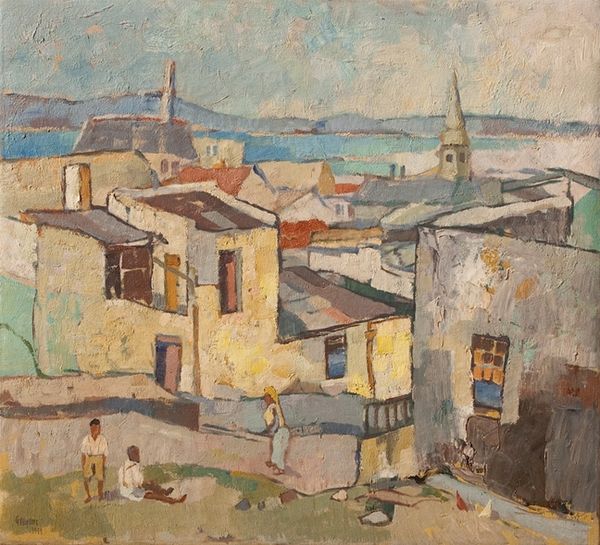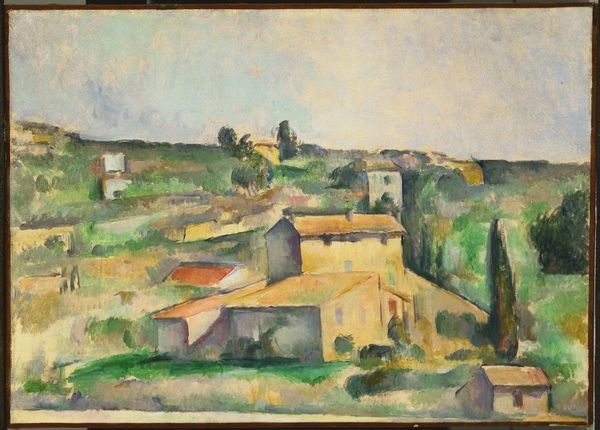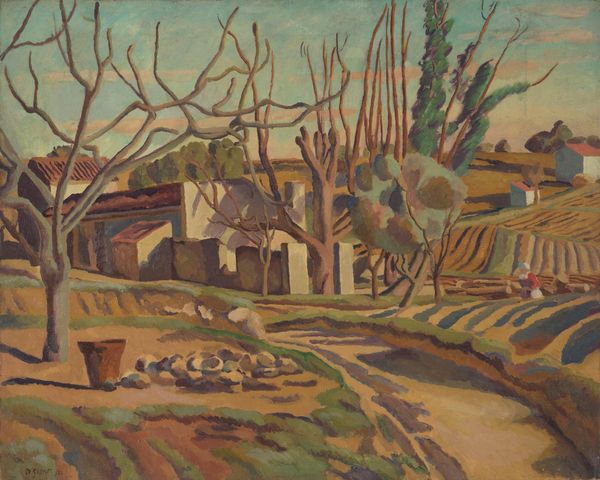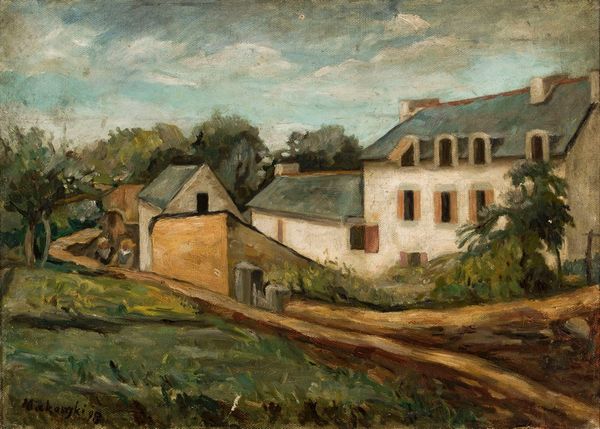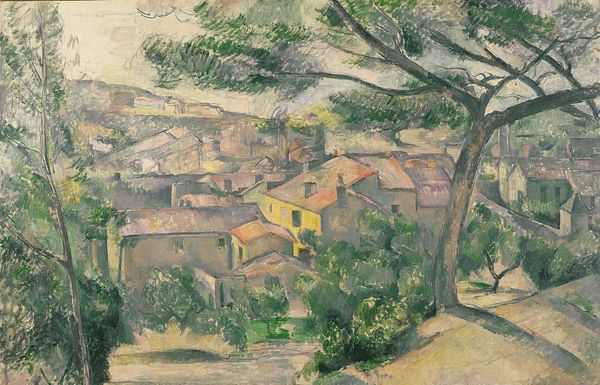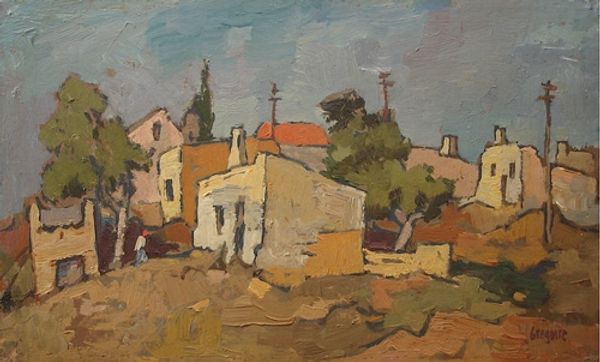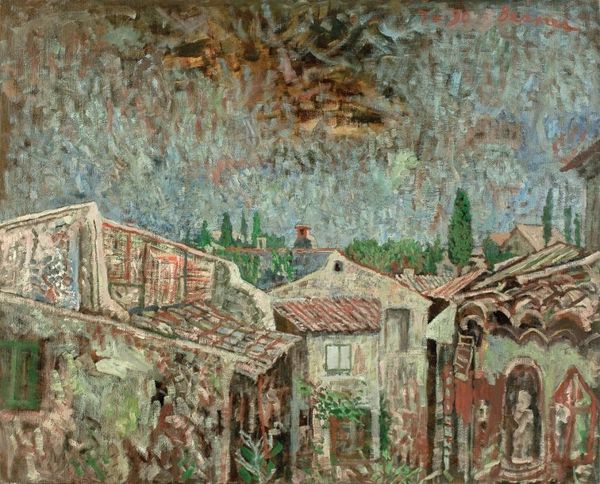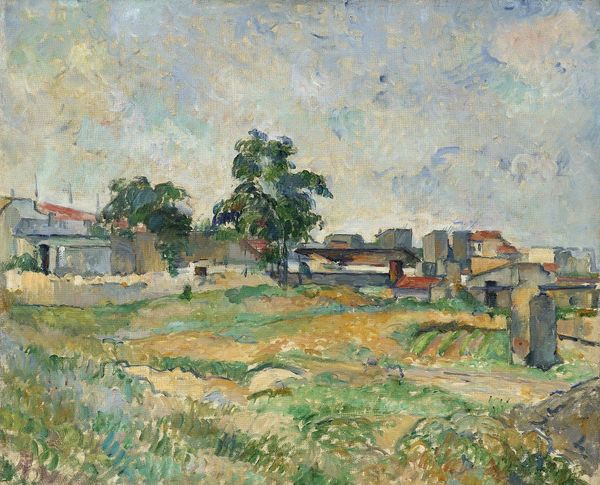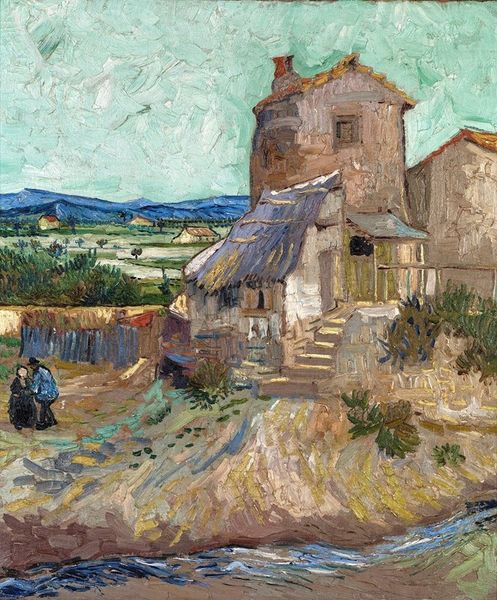
painting, plein-air, oil-paint
#
painting
#
impressionism
#
impressionist painting style
#
plein-air
#
oil-paint
#
landscape
#
impressionist landscape
#
oil painting
#
cityscape
#
genre-painting
Copyright: Samuel Mutzner,Fair Use
Curator: At first glance, I see sun-drenched walls and a pervasive feeling of warmth – it seems a peaceful moment suspended in time. Editor: Indeed. We're looking at "Tatar Quarter in Balcic," an oil painting by Samuel Mutzner. It reflects the artist's impressionist style and the plein-air tradition. Balcic, now in Bulgaria, was a haven for artists during the early 20th century. Curator: Balcic… It carries a symbolic weight, doesn't it? A place of refuge, cultural confluence. Those whitewashed buildings are so redolent of Mediterranean identity – the clustered shapes remind me a little of pre-Renaissance depictions of Jerusalem. And what are the human figures doing? Is it daily labor? Simple relaxation? Editor: Good question. The everyday is elevated. Genre scenes in Balcic emphasized the cultural diversity and the Orientalist fascination of the era, albeit often filtered through a Western gaze. Note the composition, with its careful arrangement of buildings and figures. These elements, including the individuals positioned toward the picture plane, reinforce an air of unpretentious reality. Curator: Do you think there's also a bit of utopian sentiment, reflecting the search for a lost world? This sort of timelessness reminds me of biblical symbolism. Perhaps there's more intention in capturing and framing something almost mythical. The image feels balanced, yet has rough and imperfect finish. Editor: I agree on some points, but it’s crucial not to over-romanticize or overlook the art market forces at work. Balcic, while visually captivating, was also a marketable exotic destination, part of larger socio-economic shifts, including Western European tourism. Mutzner carefully positions figures into familiar archetypes while emphasizing architectural planes to convey the cultural depth of what visitors could find. Curator: Fair enough. I must concede the cultural and marketing angle makes sense. The figures really look like models here in relation to each other. Overall, it seems it still hints at continuity between cultures, both materially, historically, psychologically. The weight of memory makes Balcic an enduring image. Editor: I agree. It captures the nuances of a place, a moment, and the artistic visions that are formed and, circulated by the context in which it sits.
Comments
No comments
Be the first to comment and join the conversation on the ultimate creative platform.
